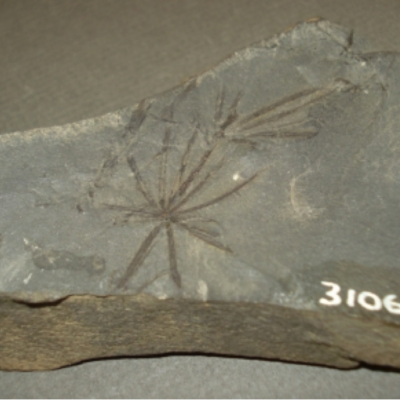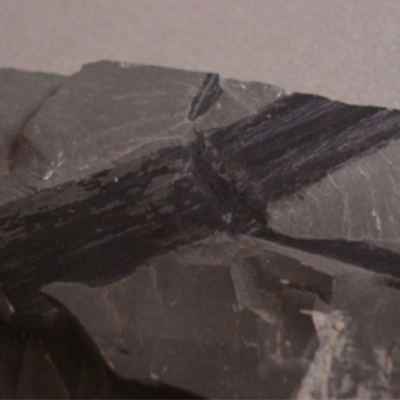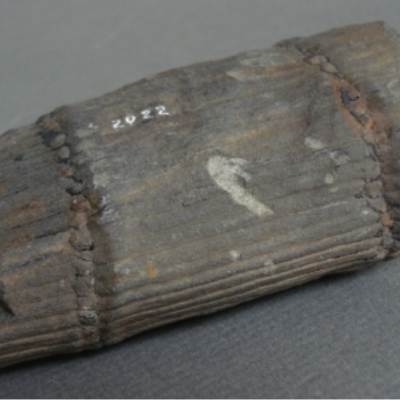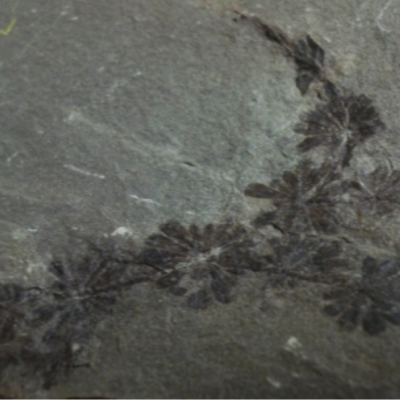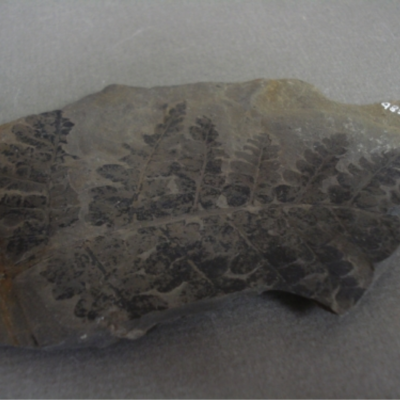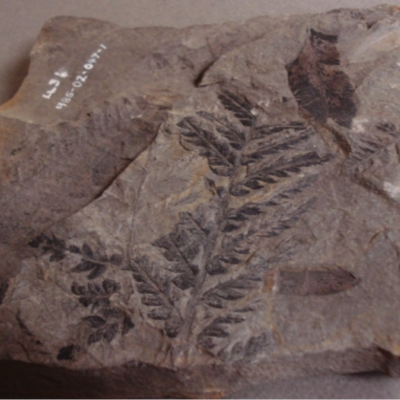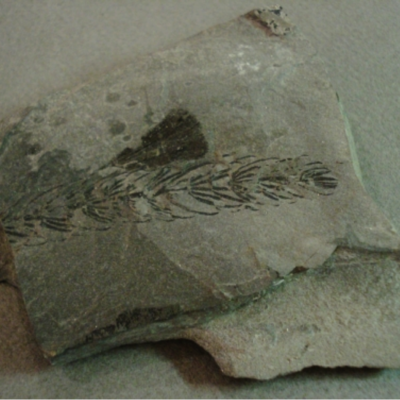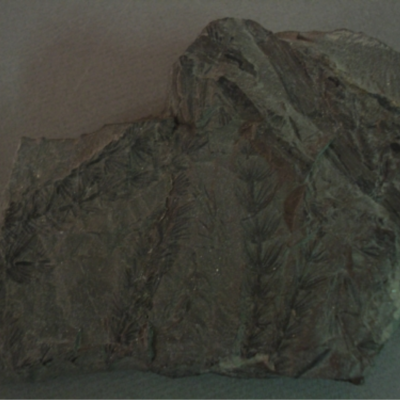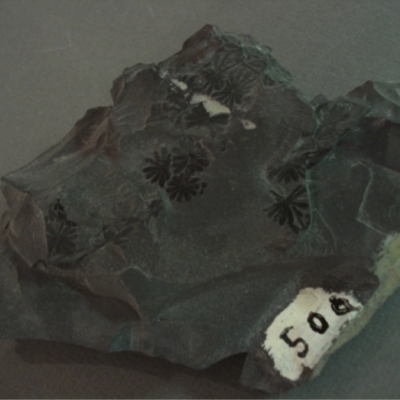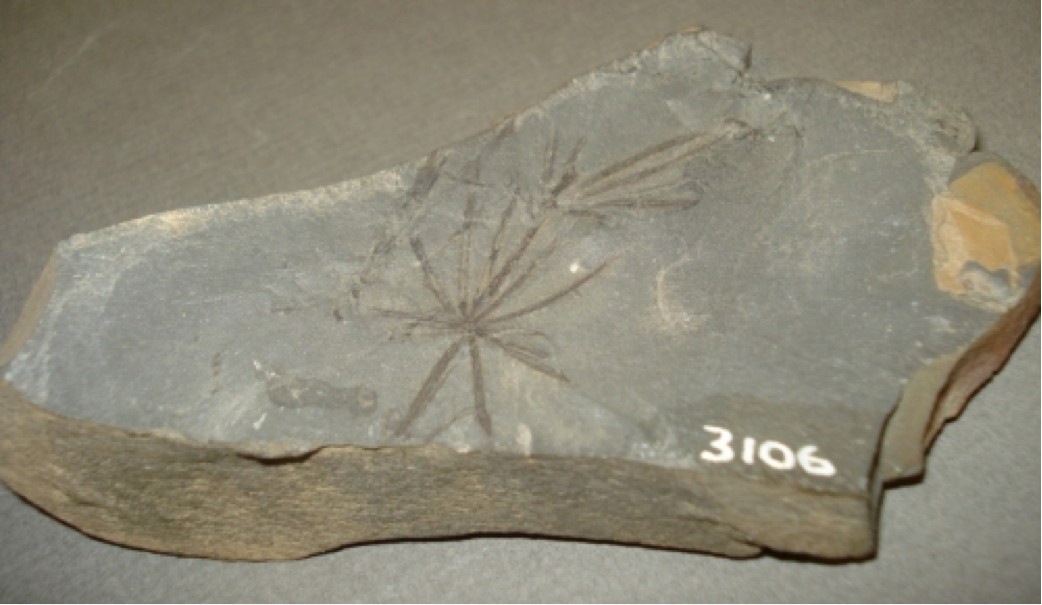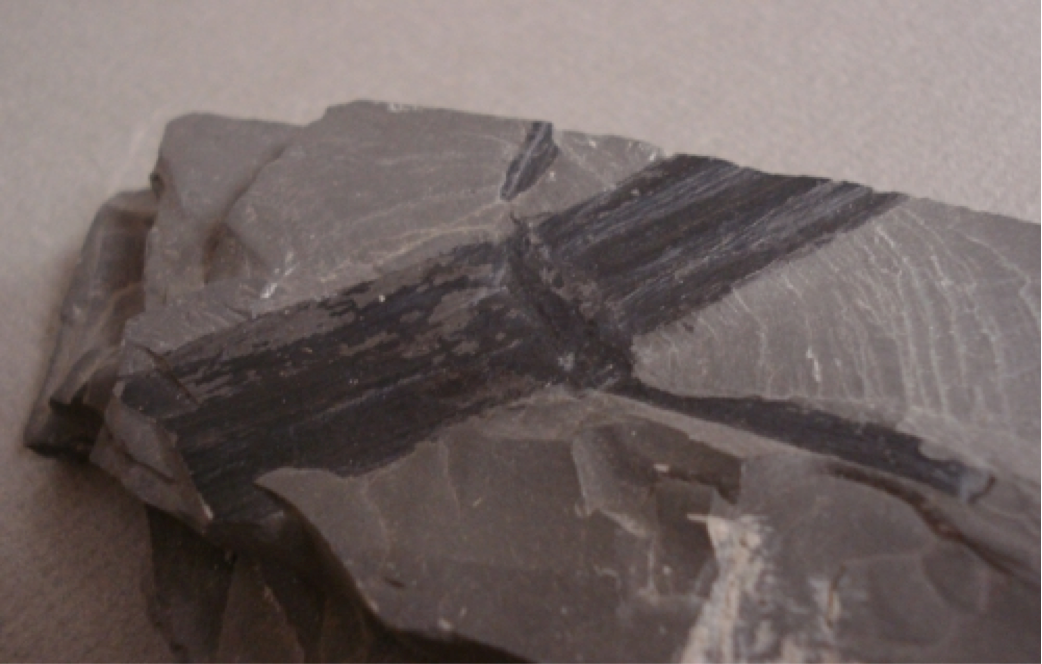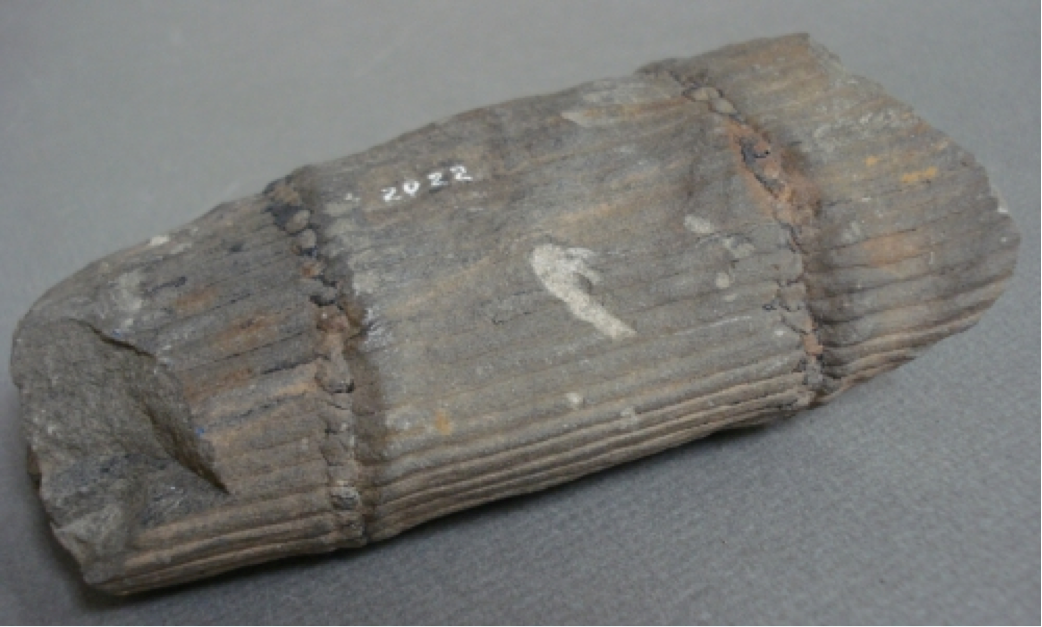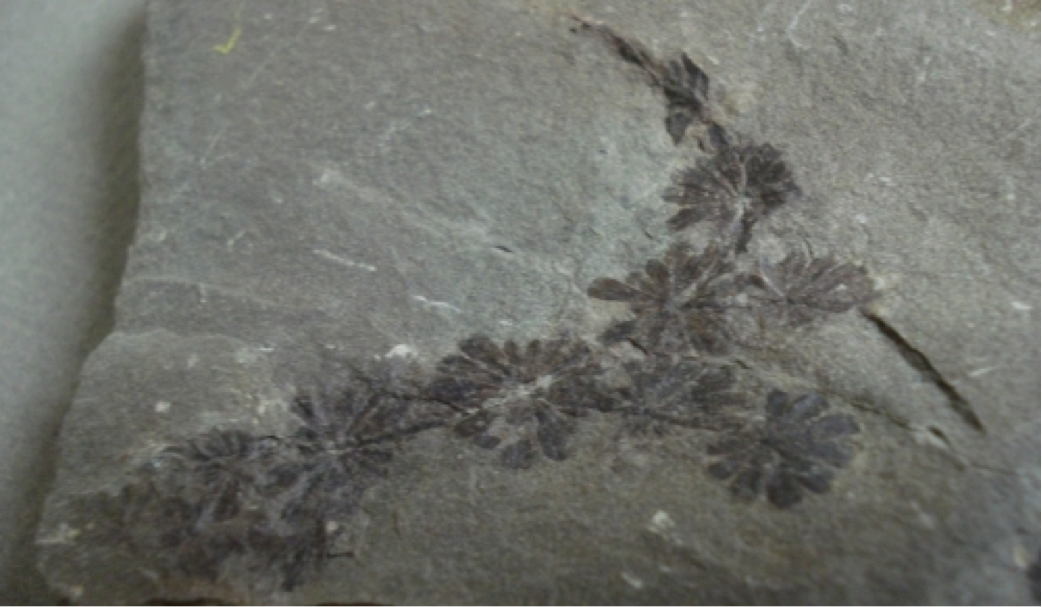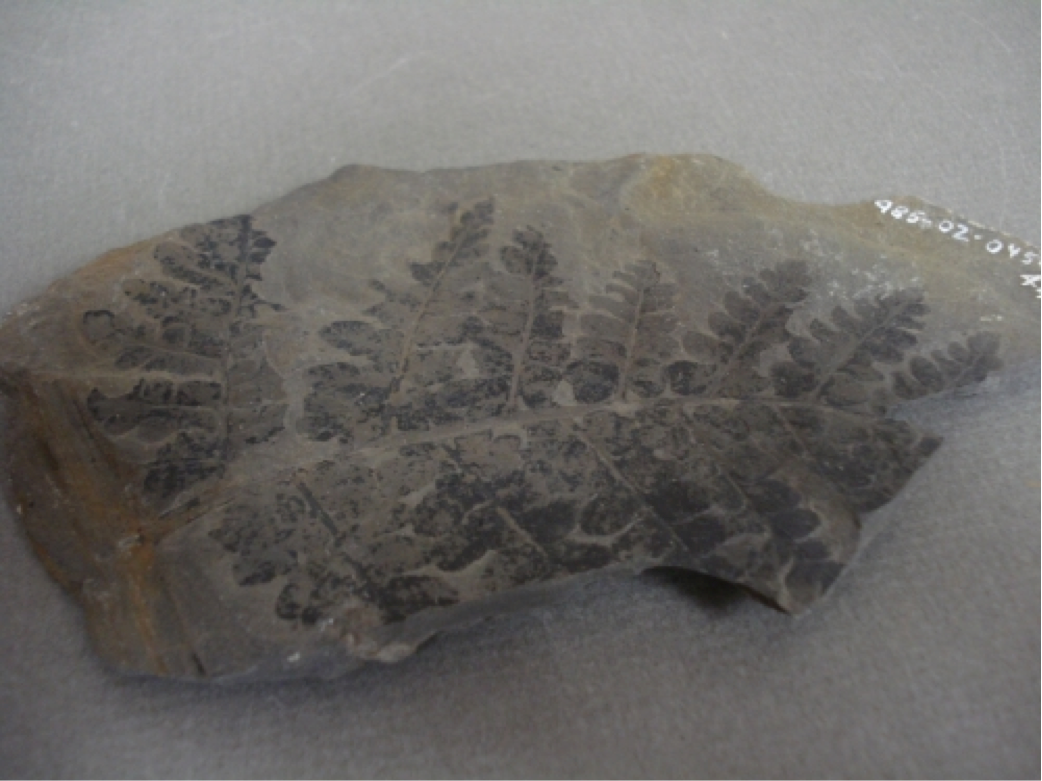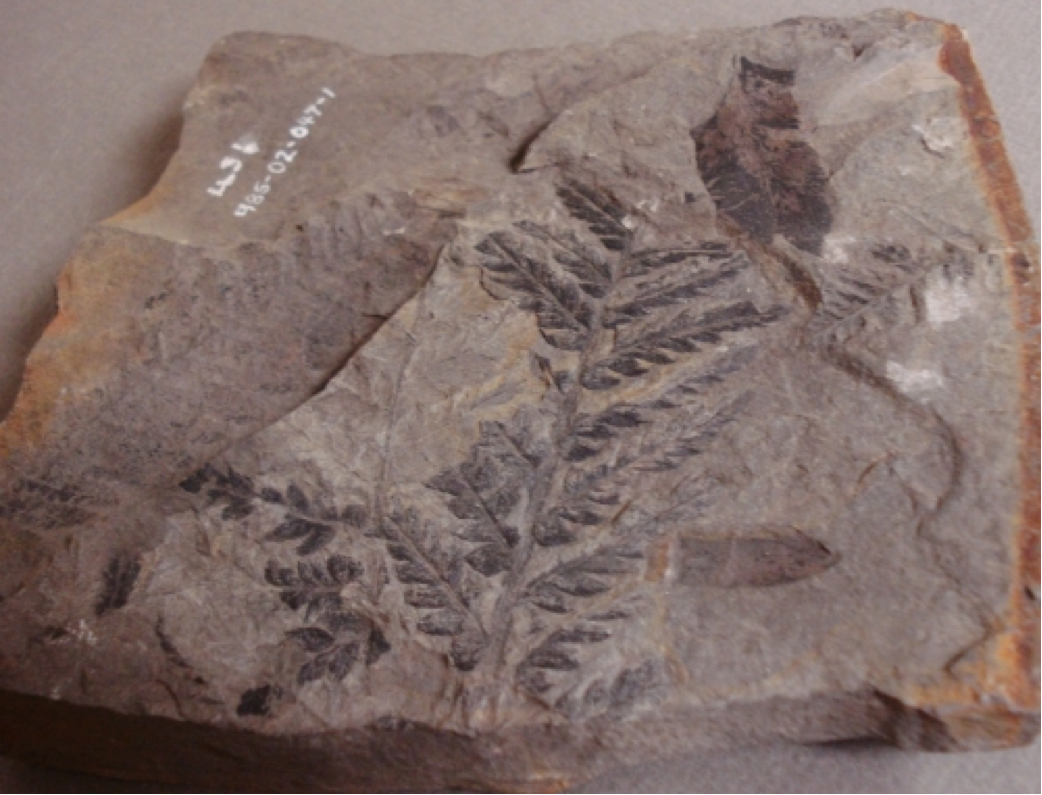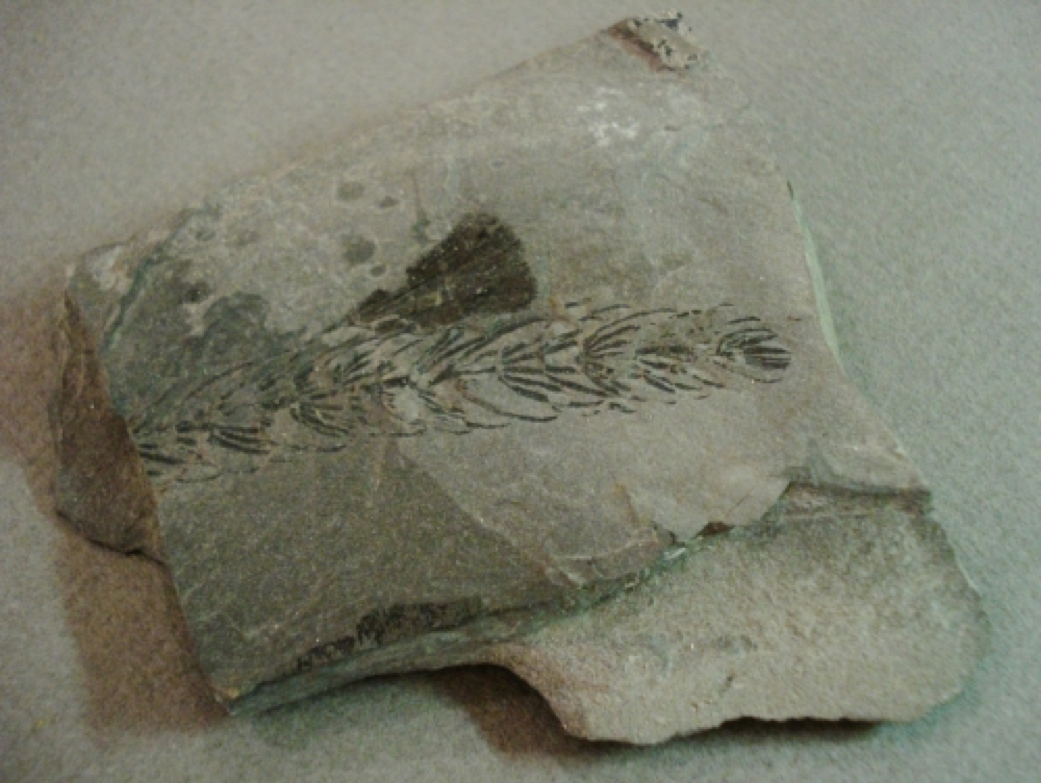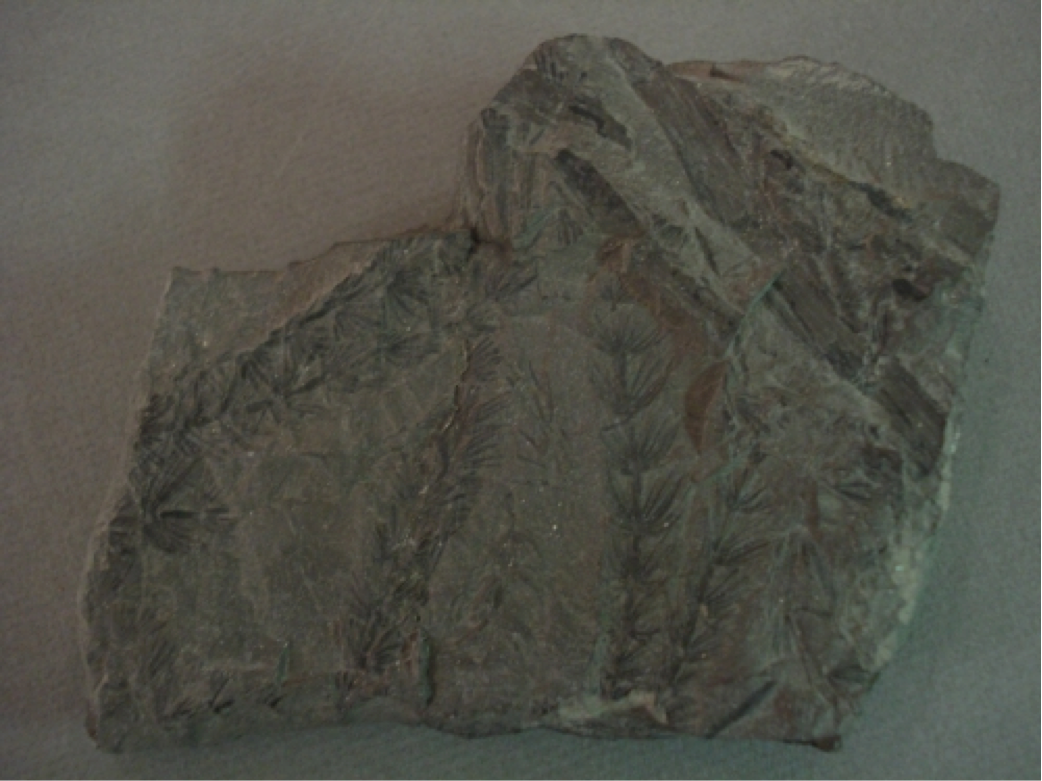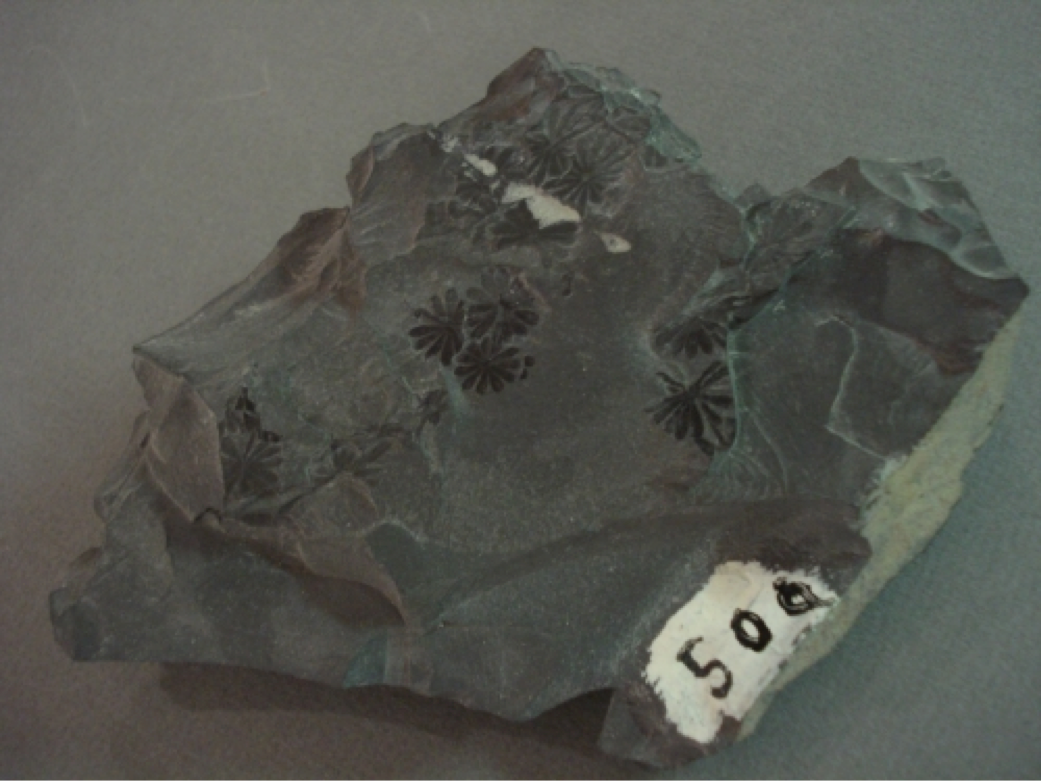Calamites are a type of horse tail plant that lived in the coal swamps of the Carboniferous Period. They were prehistoric relatives of the modern horse tail, but looked more like a pine tree and grew up to 40 feet. They had upward-slanted slender branches, arranged around a bamboo-like trunk in rows spaced several feet apart and had conifer-like needles arranged around the ends of the branches. The leaves were needle-shaped and grew in whorls around the trunk. There were up to 25 leaves per whorl. The trunk was hollow and made of wood but was very slim so it was not very strong. The plant had a tendency to fall over easily if it was not supported by neighbouring plants or by accumulated sediments.
Calamites could either reproduce by spores, which were stored in small sacs and organized into cones, or they could have reproduced by massive underground rhizomes. These underground rhizomes allowed the plant to produce clones of itself. It is the only tree of this period which is known to have had the ability to produce a clone.
